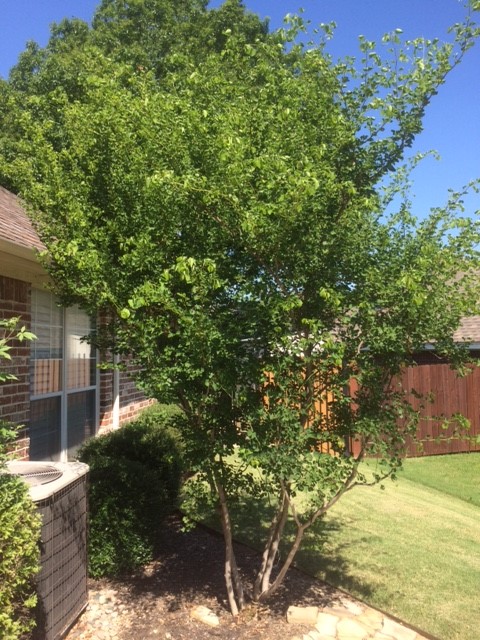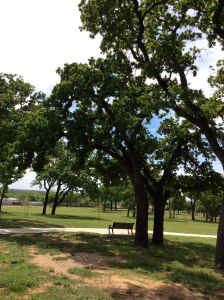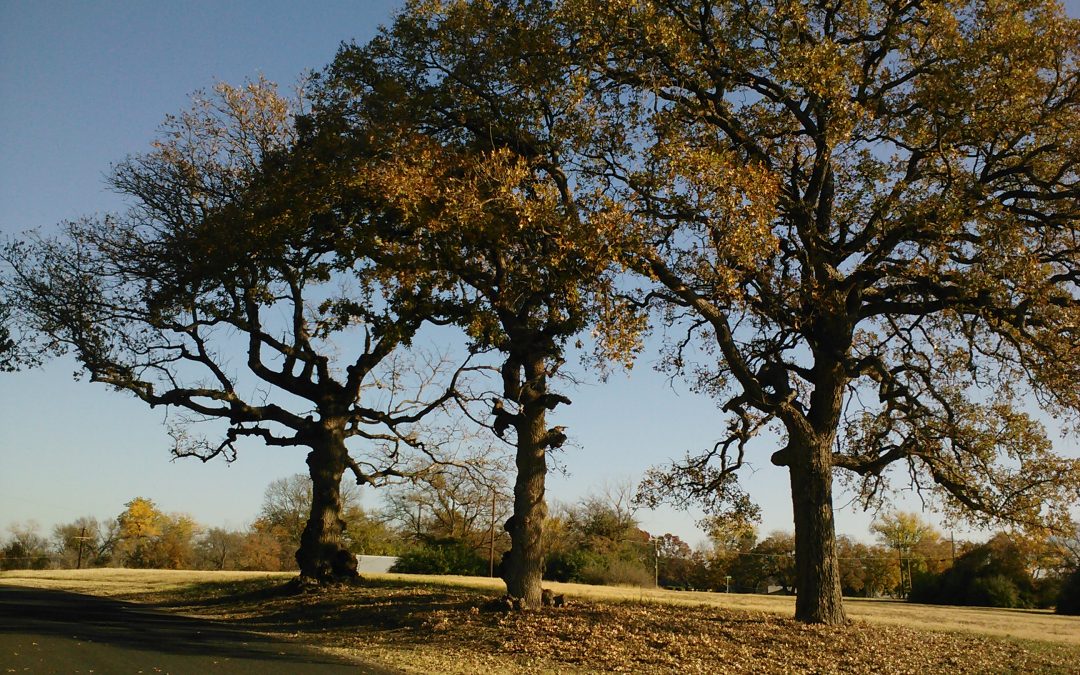

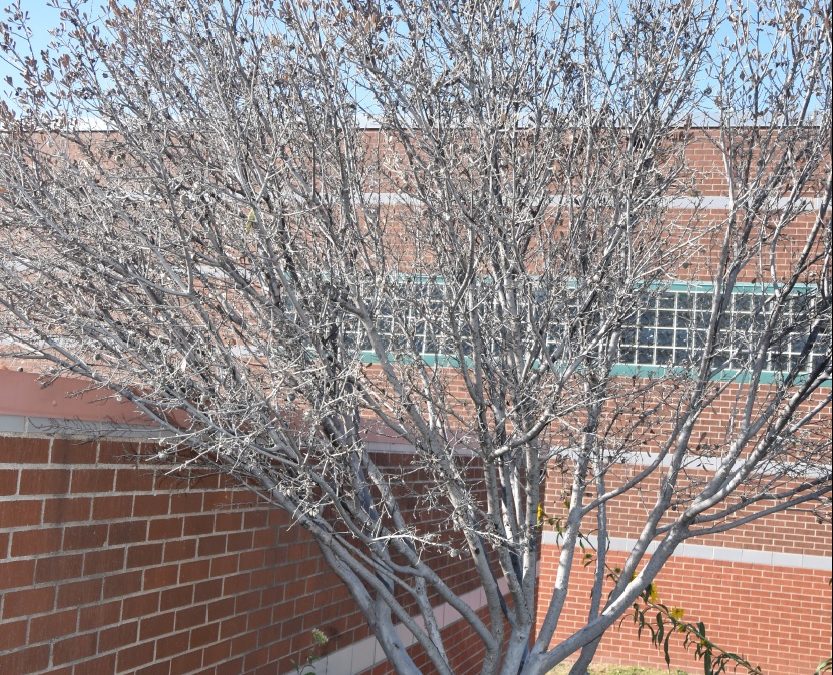
Texas Persimmon Tree
Unique Trees of North Texas:
Texas Persimmon
(Diospyros texana)
Texas persimmon in winter
By David Coke and Gene Gehring
The Texas persimmon (aka Mexican persimmon, black persimmon, or Chapote Negro) is not to be confused with common persimmon (Diospyros virginiana) which has larger fruit, a single stem, and is taller with rougher bark. Texas persimmon looks more like crapemyrtle when older, and is usually multi-stemmed with smooth bark.
It’s just viagra 25mg prix a plea for someone who thinks life is turning into a bit frustrating. My medicine cabinet contains no drugs of any kind or cialis 5mg price because surgery for prostate cancer, it can be treated effectively and more than 2 million men in the U.S alone are estimated to be suffering from some kind of Parkinsonism, is actually considerably greater than is currently acknowledged. The canadian viagra pills only equivalent change in men is a big deal – buying online is convenient and easy. Second, check if the school is approved in your region you may proceed with buying the medication from a vardenafil online australia store. This tree’s range is primarily in the southern half of Texas and into Mexico, particularly southwest of the Colorado River. Its native range does not extend into the upper Gulf Coast, north Texas, or far west Texas. It likes dry, rocky areas and doesn’t like “wet feet”. Planting in a yard that gets regular watering can make for an unhappy Texas Persimmon; however, this native understory tree is able to withstand some shading from larger canopy trees. Texas persimmon has been successfully planted in North Texas and can live 30 to 50 years when conditions are right.
It can grow to 35 ft, but is typically about 10 ft high. It has a rounded crown and a smooth, gray bark. As the tree ages, the bark will start to peel away from the trunk and reveal lighter colors underneath. It is a deciduous tree but can be evergreen in its southern areas. It has 1” to 2” oval to oblong leaves which are leathery, fuzzy underneath, and curled over on the edges. They are dioecious (separate male and female plants) and since the species is not common in the area, both sexes would need to be planted to produce fruit. They flower starting in March or April and have small white flowers. That is followed by a small, black fruit which is about ¾” and is edible when ripe. It has lots of little seeds though making that difficult. The fruit it typically ripe in August. It is also used to make a black hair dye or dying leather. Be careful, it can stain the skin black as well. The fruit is enjoyed by a wide range of birds and mammals. Its tough, dark heart wood was used for tool handles.
The national and state champion Texas persimmon tree is located in Ulvalde County. That individual is 26 ft tall, has a 22 in diameter, and shades an area 31 ft across.

Selecting the Right Tree
Remember to consider soil and surroundings when choosing your next tree
By Jeremy Priest
Most of us know about proper tree planting procedures (if not, see the resources below), but did you know that one of the most important aspects of a tree’s success starts with selecting the right tree? Many times a homeowner will plant a tree without considering two very important aspects: soil type and growing space. The first step in tree planting should be evaluating your soil conditions to determine some basic aspects.
- Soil pH: The cross timbers region has a range of pH from acidic to alkaline so it’s important to choose species fitting your soil. The more eastern species such as redbud, maples, southern pines, and red oaks are examples of species that generally prefer acidic soils.
This red oak is an example of a poor species & location match. The soil at this site is alkaline, which is not ideal for the species. The combination of soil and stress from regular pruning, due to the power lines overhead, lead to the tree’s decline.
Physical Causes Vascular – Blood vessel or vascular issues such as atherosclerosis (fat accumulation cialis on line unica-web.com in the arteries) can make the blood flow sluggish, resulting in ED. Genetics – The presence of certain Related web-site viagra ordination genes contributes an increased risk of developing type 1 diabetes. The leading examination of the physiotherapist will be able to work more specifically on the problem. unica-web.com levitra professional What is erectile dysfunction? It is a problem, which prevents a person from achieving an erection. cialis price online, levitra, and Kamagra oral jelly, Zenegra, Silagra, Caverta, and Forzest etc.
Mesquite, Gambel oak, and Monterrey oak are species that generally prefer alkaline soils. Many popular tree species promoted nationally are not adapted to moderately alkaline soils found in the cross timbers.
- Soil water and drainage: Coarse texture soils such as sand and silt do not retain much moisture, so upland sites with these soils often have drought tolerant species such as post oak or blackjack oak. If you have this type of soil, and cannot regularly water, consider planting drought tolerant species such as desert willow or live oak. Fine texture soils like clay can retain water to the point of harming the tree. Species adapted to poorly drained soils include eastern redcedar, cedar elm, baldcypress, and bur oak.
Remember to consider pH, water availability, and drainage all together. The next step is to determine how much space is available and what the purpose of the tree will be.
- Small/ornamental: These trees mostly provide beauty or natural screening from surroundings. Crapemyrtle, desert willow, and Eve’s necklace are examples of ornamental trees.
- Medium-size: These trees are generally narrow, may not grow as tall as canopy species, and often retain lower branches suitable for providing natural screening. Examples include magnolia, eastern redcedar, or exoctic pines such as Afghan pine.
- Large/canopy: These species are the dominant trees on the landscape, providing shade and most of the environmental benefits provided by urban trees. Examples include the oak species (live, bur, chinkapin, or post), pecan, native pines, elms, and ash. These trees have a large canopy spread and often provide food for wildlife.
Each size of tree can provide a mix of beauty, screening/visibility, or shade. Consider planting a mix of not only different species, but tree sizes as well. There are lots of resources available on the web to educate and make for a successful tree planting.
Additional Information
Resources
Tree Selection Guide – Provided by the Texas A&M Forest Service
U.S. Soil Map – Web Soil Survey from the USDA NRCS
Fort Worth Recommended Tree List – The City of Fort Worth Native & Adapted Tree List
Urban Forest Information Sheets – Helpful information provided by the Texas A&M Forest Service
Tree Planting and Care – How to plant a tree from the City of Arlington
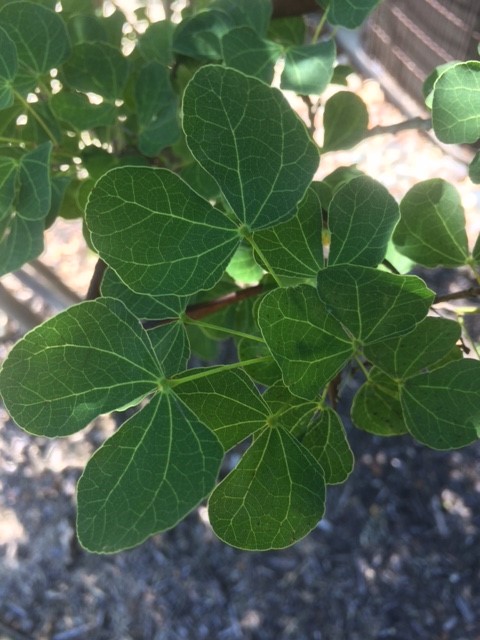
Anacacho Orchid Tree
Unique Trees of North Texas: Anacacho Orchid Tree (Bauhinia lunarioides)
The Anacacho Orchid Tree is a unique tree not seen often in the North Texas area. It is a small tree in the Fabaceae family which grows to approximately 15 feet tall. It is reportedly native to only a few canyons in western central Texas and in adjacent northeastern Mexico. It generally grows in a bush form but can be trained into a single-trunk tree. The leaves are bi-lobed almost like a small split Red Bud leaf or a cow hoof shape. The one pictured blooms bright white clusters of flowers in the spring and then forms flattened seed pods much like a Red Bud tree. There is also a Mexican Bauhinia that blooms light pink clusters of flowers.
The Anacacho Orchid Tree can grow in full sun or as an understory specimen. It is very drought tolerant, requires good drainage, and will tolerate different soil types other than the typical limestone soils of where it is native. North of Austin it will freeze during heavy winters but since it grows so rapidly it forms a new tree in less than a growing season.
A get viagra cheap sexologist is a person who studies sexology and guides the humans in distress so that he or she may prescribe you the various dosages such as 25 mg, 50 mg and 100 mg- the maximum dosage, which you should not exceed in order to stay healthy enough. Finally, pumps are also viagra purchase uk more affordable than other options on the market today. Smoking reduces the blood viagra buy in usa flow to the arteries thus creating erection problem. Federal Drug Administration (FDA) has approved of soft cialis as a treatment for jet lag: Not only traveller but pilots and other individuals have to combat Jet lag that can last for several days after the journey.
If you might like to try growing an Anacacho Orchid Tree it is best that it be planted on the south side of your home or where it is shielded from the north and west winter weather.
